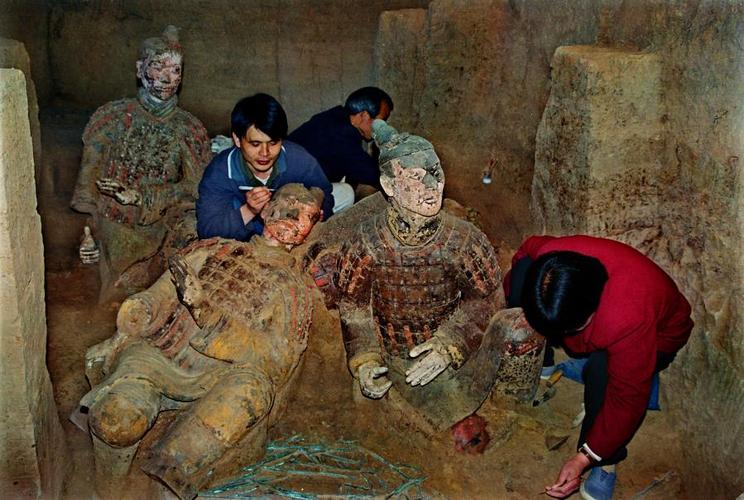
Were the Terracotta Army Buried?
The Afterlife Army
The Terracotta Army is one of the most significant archaeological discoveries of the 20th century, captivating the world with its sheer scale and artistry. These thousands of life-sized warriors stand as silent sentinels in their vast underground pits. This naturally raises the question: were these warriors once living soldiers who were then buried?
The answer is no. The Chinese army's warriors were given quarter in this respect. The Terracotta Army, however, was created specifically for the afterlife. They are clay sculptures, meticulously crafted to serve as an eternal honor guard for Qin Shi Huang, the first emperor of China, in his vast tomb complex.
Craftsmanship and Materials
The creation of the Terracotta Army was a monumental undertaking. Thousands of artisans and laborers were involved in the project, which spanned several decades. The warriors were made from a special type of terracotta clay, sourced from Mount Li, located near the tomb complex.
This clay, rich in minerals, was particularly suitable for creating durable and detailed sculptures. The figures were crafted using a combination of molds and hand-carving techniques, resulting in a remarkable level of individuality among the soldiers. Each warrior has unique facial features, hairstyles, and armor, reflecting the diversity of the Qin army.
A Symbolic Burial
While the Terracotta Army themselves were not buried alive, their creation and placement within the tomb complex were deeply rooted in ancient Chinese beliefs about death and the afterlife. Qin Shi Huang, like many rulers before him, believed in continuing his reign in the afterlife.
The Terracotta Army, along with other buried treasures and offerings, were meant to provide him with the resources and protection he needed in the next world. Their entombment was symbolic of their transition to the afterlife, where they would eternally serve their emperor.
FAQs
1. Why was the Terracotta Army buried?
The Terracotta Army was buried to serve as an eternal honor guard for Qin Shi Huang in the afterlife. It reflects the ancient Chinese belief that emperors continued their rule in the next world and needed provisions and protection.
2. What were the Terracotta Warriors made of?
The Terracotta Warriors were crafted from a special terracotta clay sourced from Mount Li near the tomb complex. This clay was chosen for its durability and ability to capture intricate details.
3. Are all the Terracotta Warriors the same?
No, each Terracotta Warrior is unique. While molds were used in the creation process, artisans also used hand-carving to create individual facial features, hairstyles, and armor details, reflecting the diversity within the Qin army.